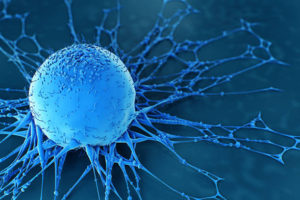Turn Back Time: How Exercise Can Reverse Age-Related Heart Damage
As we age, our hearts naturally undergo changes that can increase the risk of cardiovascular disease. The heart muscle may stiffen, or the arteries can lose their elasticity. With this the efficiency of blood pumping may decline. What if, you could reverse some of this age-related damage? There emerging some ground-breaking research which suggests that with regular exercise, especially the right kind, there can be the rejuvenation of your heart. This is true for those even in middle age and beyond.
Let us explore which forms of exercise are most effective at reversing heart aging, and how they work to restore cardiovascular youth.
The Science Behind Exercising and Heart Rejuvenation
There was a study published in Circulation, the journal of the American Heart Association, which found that consistent, and aerobic exercise over two years can reverse the stiffening of the heart muscle in sedentary adults.
The research showed that participants who engaged in various moderate-to-vigorous forms of exercise four to five times per week, felt and also saw significant improvements in their heart elasticity and function.
How does exercise achieve these results?

Improves Mitochondrial Function – Mitochondria which is the energy powerhouses of cells all decline as we age. The exercise will boost mitochondrial efficiency. This in turn help your heart cells function like those of a younger person.
Cardiac Stiffness Reduction – The aging heart, accumulates fibrous tissue, and this makes your heart less flexible. Exercise, particularly endurance training, works on breaking down this stiffness by promoting a better blood flow and also stimulating the heart muscle adaptation.
Boosts Heart Rate Variability (HRV) – A higher HRV indicates a healthier, more adaptable heart. Regular exercise trains the heart to respond better to stress or any similar triggers.
Enhancing Arterial Elasticity – Stiff arteries increases your blood pressure and heart strain. Doing aerobic exercise, keeps blood vessels supple by improving their endothelial function. The endothelial space is the inner lining of arteries.
Some of The Exercises to Reverse Heart Aging
Not all exercise is created equal when it comes to heart health. The current research points to a combination of endurance, strength, and high-intensity training as the most effective strategy.
1. Aerobic / Endurance Exercise – Is The Heart’s Fountain of Youth
Aerobic exercise is in the gold standard for improving your cardiovascular function. This form of exercise will strengthen the heart and heart muscle. It also enhances circulation, and reduces arterial stiffness.
Examples of Aerobic Exercise Include: Brisk Walking, Jogging, Cycling, Swimming, Rowing
How Much/Quantity? – At least 150 minutes per week of moderate-intensity or 75 minutes of vigorous activity, and this is as per World Health Organisation guidelines.
Here’s Why It Works: Sustained aerobic activity, forces the heart to pump more efficiently. This also increases the stroke volume – which is the amount of blood ejected per beat.
2. High-Intensity Interval Training (HIIT) – The Faster Track to a Younger Heart
HIIT alternates short bursts of intense effort with recovery periods. This has been proven to to out-perform steady-state cardio in reversing age-related heart decline.
Example of HIIT: 30 seconds sprinting, 1 minute walking
How Much/Quantity: Repeat this process for 20 minutes – alternating sprinting and walking
The Benefits: Increases VO₂ max – which is a key marker of cardiovascular fitness. Its the Maximum amount of oxygen a person can use during intense physical activity.
An added benefit is that it stimulates greater mitochondrial growth than moderate exercise
There is also the reduction in heart stiffness more effectively than steady-state cardio (per the Journal of the American College of Cardiology study)
3. Strength Training – The Hero of Heart Health

While the cardio workouts tend to get most of the attention, resistance training also lowers heart disease risk by improving metabolism, reducing visceral fat, and enhancing circulation.
Examples of Strength Training: Weight lifting, resistance bands, body-weight exercises such as push-ups or squats
How Much? At least 2 sessions per week targeting the major muscle groups
The Benefits: Strength training helps regulate blood pressure and improves insulin sensitivity, reducing strain on the heart.
4. Flexibility & Mobility Work – Supports Heart Function
Yoga and stretching may not seem directly related to heart health, but flexibility training improves circulation. This type of training also lowers stress hormones, and enhances arterial function.
Your Best Options: Yoga, tai chi, dynamic stretching
The Benefits: Reduces inflammation, which is a key factor in heart disease.
How Soon Can You See Results?
The good news? Improvement to the heart and heart conditions can be seen in as little as 8–12 weeks of consistent training. However, the general research shows that significant reversal of heart stiffness can required a minimum of at least two years of regular exercise. Consistency is key!
Like they say – the ideal time to start was 2 years ago, and the next best time to start – is Now!!!
Starting Now…
Even if you’ve been sedentary for years, your heart still retains the ability to adapt and even to improve. Reminder that the key is consistency and variety. Do a mixing of endurance, intensity, and strength for the maximum of benefit.
So, lace up those sneakers, grab some weights, or roll out a yoga mat. Your heart will thank you – today, and for years to come.












More Stories
Physical Therapy Stretch Bands
Exercises That Can Help Fix Your Posture
Uh Oh! You’ve Gained Some Weight